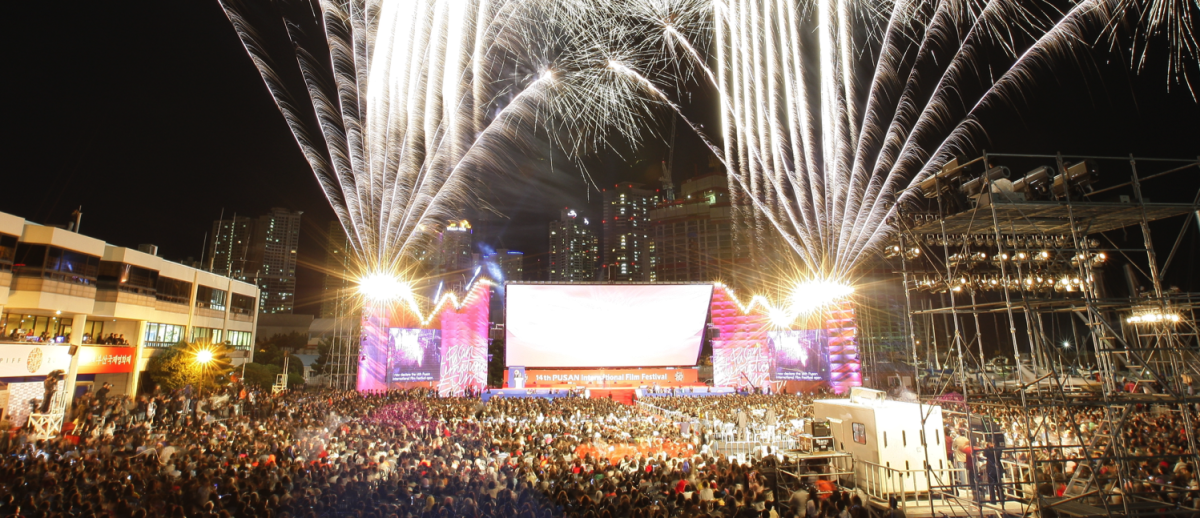Scaling Imagination: The Political Implications of Popular Media
archive


Busan Film Festival
Scaling Imagination: The Political Implications of Popular Media
At the dawn of the 21st century, cultural homogenization was widely considered one of the most threatening aspects of globalization. Following a decade of deregulation, financialization, and technological innovation, powerful media conglomerates were plying their way across national frontiers, hailing new audiences that seemed to transcend culture, gender, and generation. Disney, Fox, and Time Warner led the way, soon joined by new media titans, such as Facebook, Netflix, and Activision Blizzard. Yet as American media seemed to be growing ever more influential, new transnational competitors began emerge as well: Rotana from Dubai, Reliance from Bombay, and CJ Entertainment from Seoul. They were complemented by digital, gaming, and social media companies such as China’s Tencent, France’s Ubisoft, and Russia’s Yandex.
These conglomerates have saturated the world with images that participate in the spectacularization of politics, which favors the interests of neo-liberal capitalism and squeezes out alternative visions.1 This cultural environment has also been conducive to the rise of authoritarian leaders like Trump, Modi, Putin, and Xi.2 Training their sights on enemies foreign and domestic, these leaders deploy divisive imagery and rhetoric aimed at “walling off” meaningful encounters across frontiers of difference.3 Paradoxically, nationalism and authoritarianism seem to be gaining traction because of, and in spite of, the globalization of contemporary media.
And yet the implications of this media revolution are more complicated and perhaps less dire than some critics would suggest. For at the same time that media conglomerates have commodified many domains of culture and sought to shape modalities of cultural expression, they have also unexpectedly fostered the conditions for new forms of social affinity and public imagination, many of which transcend social differences and index new prospects for progressive politics.
If, as Richard Falk and Victor Faessel argue, “public imagination” is a plural concept that invites connections between diverse modalities and processes, both formal and informal, it should encourage us to use popular culture as a lens for exploring these new topographies of imagination. A first step may be to set aside explicitly political considerations and reflect instead on the dynamics of popular culture at work within and across localities. By popular culture, I’m referring here to what some might call entertainment media—such as film, television, music, gaming, sports, and social media—those forms of culture that focus on pleasure and performance as opposed to expressly political forms of journalism and information media. Although the two domains are inevitably intertwined, popular culture is generally considered distracting, derivative, and commodified. It is rarely a touchstone for analysis of, for example, resurgent nationalist authoritarianism. Instead, critics point to neo-liberalism, jihadism, and mass migrations of the dispossessed as fueling the wave of resentment against globalization.

still from the Saudi film Wadjda (2012)
For most people, these phenomena are highly mediated and it’s important to understand that many who embrace the political right are as much concerned about their eroding status as tastemakers and cultural arbiters as they are as national citizens. This unease plays out most conspicuously across gender and generation. Husbands are concerned about their wives’ media use; parents are bewildered by their children’s expansive access to popular culture; and older citizens are nostalgic for the days of collective spectatorship in the living room rather than personalized media use via smartphones, tablets, and laptops. Even if only intuitively, people are aware that new media configurations, flows, and practices are re-scaling social connections and imaginaries in ways that may jeopardize patriarchal notions of family, community, and self. Conversely, women, children, immigrants, minorities, and LGBTQ communities commonly turn to popular culture for resources to help them narrate their experiences outside dominant frames by sharing fantasies or making themselves more publicly visible. In many cases, their media use isn’t explicitly political. They are making do and getting by. Theirs are “footsteps in the city,” tactical maneuvers by which they negotiate terrains that are structured by dominant elites.4 Yet it is their cumulative engagement with media from near and far that generates new affinities and topographies of imagination.
Popular media
Therefore, if it seems a particularly dark moment in the realm of explicit politics, the tacit politics of popular culture offer perhaps a more hopeful if contradictory blend. For media globalization has engendered a complex play of integration and differentiation, of dominance and resistance, and of nationalist authoritarianism and post-national solidarities. Popular media are therefore a central resources for imagining the diverse publics of today and tomorrow.5
Even if only intuitively, people are aware that new media configurations, flows, and practices are re-scaling social connections and imaginaries in ways that may jeopardize patriarchal notions of family, community, and self.
What are the characteristics of this new era of media globalization?
First of all, as mention above, modes of finance and circuits of distribution have changed dramatically since the 1990s. Not only are Hollywood films conceived, financed, and circulated transnationally, so too are Arab television shows, Korean pop songs, and French video games. Of course, many other cultural products still serve local and national audiences, but transnational media distribution has escalated dramatically, driven by competitive pressures and facilitated by new technologies.
Secondly, modes of media production have stretched across space, initiated primarily by the pursuit of cost economies among the worlds most prosperous and prolific producers, the Hollywood studios. With film, television, and video game production budgets ballooning into hundreds of millions of dollars, producers began to develop relations with studio facilities and government entities around the world. Today, cities like Vancouver, Prague, and Hyderabad compete to provide transnational producers with “world class” infrastructure, labor, and government subsidies that facilitate a geographically mobile and protean mode of production.
Thirdly, this transnational production network is made possible by a convergence of professional practices that have emerged via knowledge exchanges that take place in offices and production studios, as well as in the international markets for content exchange (e.g., MIPCOM). Workers at these sites share techniques as well as insider tips, gossip, and industry folklore. Film festivals (Busan) and awards ceremonies (African Movie Academy Awards) also provide contexts for deliberations about aesthetic and professional practices.

African Movie Academy Awards 2017
Fourthly, as media professionals interact in these transnational venues, much of what they learn and observe filters back to national and local contexts where textual features and production techniques are imitated or adapted, resulting in hybrid content that is reimagined for different publics. Remarkably, adaptations move “up” and “down” as well as “across.” That is, content and aesthetics not only circulate widely, they are also refigured in order to address different topographies of imagination. And they create new topographies. What was once a Latin American regional media market has recently become interwoven with the very substantial and prosperous Latin market in the United States, resulting in a new hemispheric scale of popular imagination, creation, and circulation. A foundational genre of this media sphere is the telenovela, which has changed dramatically as a result of globalizing forces, and has moreover become an agent of change by influencing producers in distant locales, such as Istanbul, Lagos, and Beijing.
Finally, we are witnessing new patterns of interaction between media users and producers, as well as among users themselves. Once seen primarily as consumers, today viewers and fans amply express themselves in a variety of ways and media producers systematically monitor this discourse, creating feedback loops that shape story lines and characters. Moreover, online commentary and recommendations have become fundamental factors in the popularity of media texts and in the expansion of media options.
content and aesthetics not only circulate widely, they are also refigured in order to address different topographies of imagination. And they create new topographies.
In China, for example, social media sites like Weixin and Weibo have stimulated an explosion of awareness about foreign titles as well as local niche offerings, which used to be unavailable in mainland mass media. Netizens also volunteer for subtitling teams that each year make thousands of foreign titles almost instantly available. Moreover, user-generated content has mushroomed, again blurring the distinctions between media creators and consumers, and blurring distinctions between cultural points of origin. Setting aside debates over piracy, one finds that peer-to-peer sharing of media content has exponentially increased the transnational availability of media content.
Politics of the Popular
Consequently, we now live in an era of transnational media scapes, spheres, regions, and zones of consumption. These are protean spaces of imagination that are constituted and reconstituted from top to bottom, spaces that would have been unimaginable during the 1980s when a trans-Pacific telephone call cost $3.20 per minute, when blockbuster cinema was the proprietary province of Hollywood, and when government regulations and technical standards prevented TV viewers in Singapore and Senegal from watching the same program.

Actress Min-Hee Kim shooting Ah-ga-ssi (The Handmaiden 2016)
Researchers have historically focused on media’s capacity, or putative mission, to reinforce local and national ties, but we’re now seeing the ways in which media worlds emerge, scale, and diminish in response to a relentless tug of actors and forces. Importantly, these creative dynamics provide groups and individuals with resources for negotiating everyday life.6
Still, this analysis should not be mistaken for a utopian embrace of the autonomous power of electronic media to bring about beneficial social change. Mobile phones have come to rural India, but in many places they are in the hands of men who use them to obtain market prices and job postings when they’re not viewing movies and music videos. Women are barred from using phones for fear they will be distracted from their chores or seduced by online suitors. In some ways, the affordances of the mobile phone make men both more inquisitive and more guarded about their status and authority. These are the sorts of complex dynamics that play out in the everyday world where media globalization generates friction, and this friction helps to explain why some people find nostalgic authoritarianism appealing.7
By reflecting more systematically on concerns about cultural homogenization raised during the 1990s, researchers have found instead that media globalization engenders a more complicated cultural geography. John Tomlinson coined the term complex connectivity to explain the new interconnections and interdependencies that have emerged despite the enduring realities of physical distance.8 This connectivity engenders new social experiences and relations that change one’s perspective in place and allow new interactions across space, but it also may accentuate differences and new forms of social conflict. Authoritarian nationalism is therefore one response to these conditions, but so too are the new progressive sensibilities that are circulating in unexpected ways via popular media.
1 Chaira Bottici, "Imaginal Politics in the Age of Trumpism." global-e, November 2, 2017.
2 Falk and Faessel, "Public Imagination: The Challenge of Populist and Authoritarian Politics." global-e, January 26, 2016.
3 Drucilla Cornell and Stephen Seeley, "What Has Happened to the Public Imagination, and Why?" global-e, March 21, 2017
4 Michel de Certeau, The Practice of Everyday Life. (Berkeley and Los Angeles: University of California Press, 1984)
5 See in this regard Fred Dallmayr, "Public Space: Thinking at the Edge of the Cave." global-e, April 25, 2017.
6 Adrian Athique, Transnational Audiences: Media Reception on a Global Scale. (Cambridge: Polity Press, 2016). They also can provide the basis for more politically engaged forms of media activity, see Carlson and Sinclair.
7 Anna Lowenhaupt Tsing, Friction: An Ethnography of Global Connection. (Princeton: Princeton University Press, 2005)
8 John Tomlinson, Globalization and Culture. (Cambridge: Polity Press, 1999).



